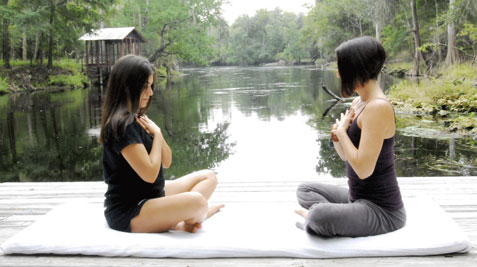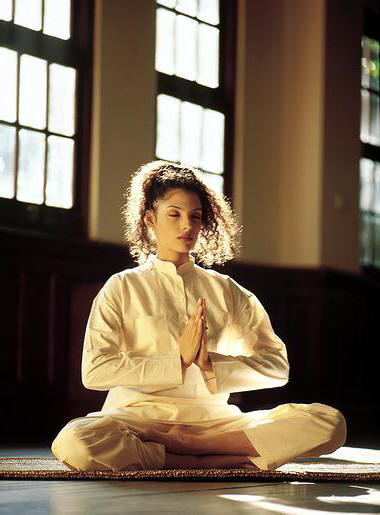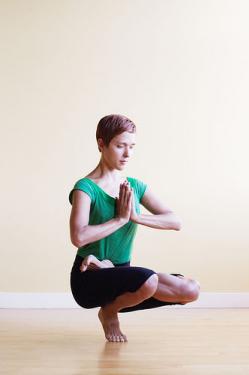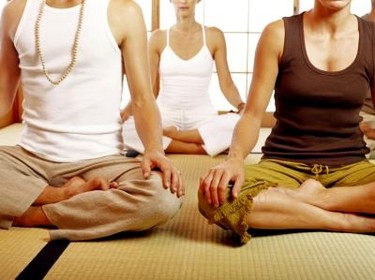|
|
|||||||||||||||||||||||||||||||
|
Yoga Tips for Beginners
Do's and Don't's for Yoga BeginnersBy Jay Franco - 2009. Once you have decided to follow a healthy regime through yoga, the next step is to pick the type of yoga that you want and be acquainted about yoga basics. You can choose a yoga class near by for easy conveyance. Yoga doesnít need any kind of costly equipment except for loose comfortable clothes and a yoga mat. Some easy positions of yoga, for beginners We all do simple positions in everyday life, like lying down, sitting, standing, prone inverted etc. But with proper practice of the aforementioned yoga postures the beginners can be benefited to great extent. These simple activities are arranged and worked out so that a yoga beginner also gains from them. Medical practitioners find yoga to be therapeutic. They even suggest to make yoga a part of their every day life. With gradual introduction of yoga and its method health benefits can be gained. As a yoga beginner you can choose moderate style like the viniyoga, kripalu yoga or iyengar yoga. You can choose vigorous forms like the power yoga, asthanga yoga in late stages. The later one will be too dynamic for the yoga beginners. See that you start yoga gently with 10-15 mins warm up session, as it increases blood circulation and lubrication in joints. The body flexes and it becomes easier to do the yoga asana. Maintain correct erect posture throughout.
Breathing techniques of yoga, for beginners Yoga is synonymous with breathing technique. With simple breathing exercises in yoga like the pranayama, kapalbhati, anuloma-viloma, one can improve breathing pattern and lung capacity. This kind of yoga relaxes and eases stress. Importance of sequence for yoga beginner Ideal yoga sequences should not be taxing, especially for beginners. As a yoga beginner you can start with standing pose, followed with sitting posture, Supine postures, twist poses, prone postures, inverted and balance postures, back bends and finishing asana. Some doís for yoga beginners As a beginner itís better to inform the yoga instructor that you are new to yoga fitness regime. You can even ask the teacher to help you out in case of need. You can seek the help of other advanced students to demonstrate poses. Itís better to know about basic yoga etiquette and learn some basic yoga poses, this you can do searching online or from books and DVDís. Start fresh with refreshing bath prior to yoga practice. Always end the yoga session with shavasana. Some doníts for yoga beginners Avoid taking large heavy meals before any yoga class. Ensure that you have eaten 3-4 hrs before the class. You can have some water before and after the yoga class. Avoid tight fitted clothes, shoes and socks while doing yoga.
Yoga Meditation TipsYoga is beyond an alternative form of therapy, a physical exercise routine or a breathing technique. It has more to offer than this. Yoga is also about preparing the mind, body and soul for meditation. In fact yoga and mediation goes hand in hand and was formulated in ancient India for meditation by the sages. Meditation is the state of mind to accomplish spirituality. Yoga helps a stressed out mind to relax and calm down in order to do the meditation practice. Philosophy of yoga and meditation- the Patanjali yoga philosophy is based on ďastanga yogaĒ, the eight limbs. Yoga meditation also describes the five state of human mind. The initial state of mind is disturbed, bewildered and distracted. They are hindrances in healthy growth of mind and body. Concentration and balance is achieved through yoga meditation postures. Yoga Meditation Technique There are numerous ways to learn yoga meditation techniques. The main aim of all these yoga meditation practice is attainment of self-realization. Yoga is a science; the techniques are ways to develop the skills in order to meditate so as to discover about self within. Here is explained a step by step yoga mediation technique.
Relaxing the Body In this yoga meditation the body is relaxed with the help of yoga postures and relaxation exercises like yoga nidra or corpse pose and also Hatha yoga postures. One grows and absorbs with more and more practice of yoga meditation exercises. The main aim in any of this technique is to relax the body whenever needed.
Sitting Posture There are several postures in yoga. Swastika Sana, siddhasana, sukhasansa are some of the postures. It may take years to develop and refine the yoga meditation poses. Adjustments in arms, legs and feet can be done for yoga meditation. The aim is to develop comfortable seating posture with head, neck, trunk and body straight. Breathing Process Awareness is important for breathing. Observing the breadth when to pause, inhale and exhale can be learnt with pranayama, kapalbhati, anulom vilom etc. Proper breathing practice is the essence of any yoga meditation.
Thought Process Instead of eliminating the thoughts try to ponder and contemplate on the neutral aspects. Yoga meditation lies with letting go and free flow of thoughts instead of repression and emotions. Introspect and discriminate on the train of thoughts through yoga meditation. Promoting Thoughts The next step is towards assuaging the karmas and samskar with promotion of good thought. The good thoughts are reinforced into will power and finally into actions. They are implemented in day to day life. Not Being Disturbed Self-control and equability is accomplished without getting wavered from any kinds of external as well as internal disturbances. Maintaining equanimity expands in due course of time, in stages in yoga meditation. All these yoga mediation techniques work together for attainment of supreme self.
About the AuthorJay Franco has been a Yoga enthusiast since an early age. He is constantly trying to find practical ways of implementing this ancient knowledge into his Western lifestyle.

|
|
||||||||||||||||||||||||||||||
|
Website Design + SEO by designSEO.ca ~ Owned + Edited by Suzanne MacNevin | |||||||||||||||||||||||||||||||




